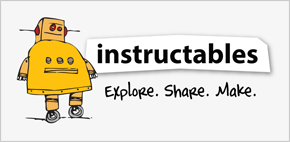Step 1: Makey Makey and Scratch Operation Game
Make a fun, life-sized operation game of your own character! Super easy project for all ages!
Step 2: Materials
Materials needed:
Makey Makey Kit
Computer with Scratch Program (free online and offline modes)
Cardboard
Paint
Aluminum Foil
Glue Stick
Clay/Sugru
Chopsticks
Rubberband
Box Cutter
Duct Tape
Step 3: Paint your operation game board
Cut your cardboard to whatever size suits your project. Dream up what character you want to use and paint it on the front. My project was for an elementary school science fair interactive table, so I used a character the kids would recognize but not be too upset to operate on (like Elsa).
Step 4: DIY non-conductive tweezers
After you have painted your character, make your tweezers out of chopsticks, a rubberband, paper, and foil.
Wrap the two chopsticks in foil, gluing down as you go. You could also use other conductive materials like wire, copper tape, etc. At the top of the chopsticks I left extra foil twisted up and curving toward each other for the alligator clips to connect the tweezers to the makey makey later.
Roll up a small piece of paper and put it between the chopsticks at the top. Wrap a rubberband around the paper and chopsticks to create tweezers with some resistance.
Step 5: Operating spots and back of the game board
Now that you know the size of your tweezers, you can plan out where you want your operation spots to be and draw the holes you are going to cut. Think about the size of your operating hole carefully- if it is too big it will be too easy to get the object out; if it is too small you won't be able to get the object out with the tweezers.
Once you have the amount and size of operating holes drawn out, cut them out with the box cutter. Save the shapes you cut out for the next part.
Next I made foil pockets and little supporting boxes for the back of the operating hole. I glued the cardboard that was cut out for the operating holes to a piece of aluminum foil. At one corner of the foil I twisted a small foil "rope" and folded up the rest of the foil to make the walls of the operating hole pocket.
I then glued the cardboard base of the foil pocket into a small cardboard box that would surround and protect the foil. I cut a slit in the side of the box to let the twisted foil "rope" or "wire" out to be connected to the makey makey.
From the back of the game board, I pushed the foil walls up through the operating hole shape and duct-taped the box flush to the back of the game board (with the twisted foil rope sticking out). Next I glued the edges of the walls down onto the game board to make the edge of the operating hole conductive.
After I made all my foil pockets, on the back of the game board I made each twisted foil rope longer and twisted them together in one spot to connect to the makey makey. If you want the game to make different sounds for each operating spot, then leave them separate.
Step 6: Make the body part objects to pull out of the game board
I used clay to make the body parts for my minion and colored them with marker. I made only three: a leg bone, heart, and banana (bananas on the brain).
Sugru is also a great material to use.
Just make sure whatever object you use in not conductive, or else your buzzer will go off as soon as the tweezers touch the object!
Step 7: Scratch and Makey Makey
The beauty of Makey Makey is that it makes the computer think that you are pressing a key on the keyboard when you complete a circuit with conductive materials. For example, if you clip in a banana to the space bar and touch it while touching the ground, the banana becomes your space bar!
So, when you make the programming on Scratch, use simple commands like "When the space bar is pressed, play buzzer sound" to make your operation game!
My game is based on the Makey Makey project guide at http://makeymakey.com/guides/operation.php . I remixed the game in order to have an actual minion on the screen that changes color when the buzzer goes off.
Scratch is super easy to use for anyone, whether you have coded before or not!
Lastly, You will hook up the makey makey to bring your game to life! Plug in your makey makey with the USB cable.
Using alligator clip/jumper cables (they come with the kit) connect the foil pockets to whichever key corresponds to your Scratch game coding (I used the space bar) on the makey makey.
Next connect your tweezers to the ground on the makey makey. I used two jumper cables connected together to make the tweezer's reach go farther.
Now you are set, start up your game and have fun!
License: Attribution-NonCommercial-ShareAlike.

 Powered by
Powered by 
